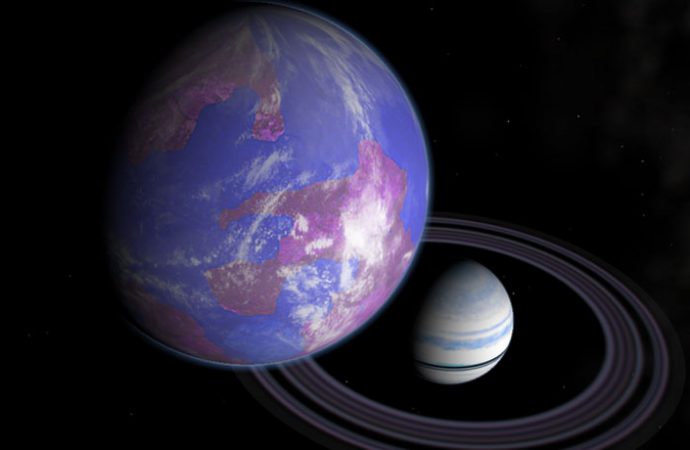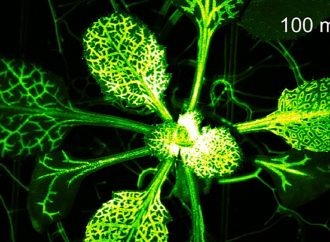New analyses of Kepler and Hubble data dig into evidence for Kepler 1625b’s satellite
Source: Science News
Hopes that astronomers found a moon orbiting a planet outside our solar system may be slowly dimming.
Two different groups of researchers took another look at data that had indicated the exomoon’s presence. But neither saw the telltale dip in starlight that would have suggested that a moon was passing in front of the star Kepler 1625.
“When I reanalyzed the data, I don’t see that moonlike dip at all,” says Laura Kreidberg, an astronomer at the Harvard-Smithsonian Center for Astrophysics in Cambridge, Mass. She and colleagues reported the results in a paper posted at arXiv.org on April 25.
In a separate study, astronomer René Heller of the Max Planck Institute for Solar System Research in Göttingen, Germany, and colleagues found inconsistent signs of a moon. The researchers analyzed the same data as Kreidberg, gathered by the Hubble Space Telescope, plus data from Kepler, the now-retired exoplanet-hunting space telescope. Both of those telescopes were used to bolster the initial case for the exomoon. But, Heller’s team writes in a paper published April 17 in Astronomy & Astrophysics, “careful consideration of its statistical evidence leads us to believe that this is not a secure exomoon detection.”
Still, the team that first reported the exomoon discovery in July 2017 isn’t ready to throw in the towel. Saying there is no moon orbiting the giant planet Kepler 1625b at all “would be a bridge too far, given the evidence in hand,” says astronomer Alex Teachey of Columbia University.
Teachey and his Ph.D. adviser at Columbia, David Kipping, first spotted the potential exomoon in observations of the Jupiter-like planet it may orbit. Kepler data revealed two successive dips in light, suggesting two bodies had crossed in front of the star, or transited. A follow-up analysis of Hubble data also showed a second, slight dip in light just after the planet crossed in front of the star, the team reported in 2018. In addition, the planet began its transit a little over an hour early, which the duo said could have been caused by a moon’s gravitational tugs.
The possible moon appeared about the size of Neptune, the team reported, nicknaming it a “Neptmoon.” That size raised questions about how such a large moon could have formed.
Skeptical, Heller and colleagues ran computer simulations to see if they could find a moon-planet-star setup that explained the Hubble and Kepler data, and if so, what properties that moon had. The researchers found so many possible matches — from no moon to moons with a wide variety of orbits — that they concluded it was impossible to definitively determine what the data meant.
Heller’s team also observed the planet transit early, but suggested that could be caused by another, unseen planet rather than a large moon. The Neptmoon, the researchers concluded, “might not be real.”
Kreidberg, who has developed a way to analyze Hubble data to study exoplanet atmospheres, agrees. Exoplanet atmosphere characterization “is a similarly precise kind of measurement” to looking for a moon in starlight, she says. “It’s such a finicky measurement that there’s no one-size-fits-all pipeline or recipe that you can use.”
Using her technique to review the purported Hubble exomoon data, Kreidberg’s team observed the planet make an early transit, but didn’t see any signs of the star dimming from a moon transit. The team also prepared the data in the same way as Teachey and Kipping had done: Still no moon.
Kreidberg thinks part of the problem is that “Hubble was never designed with this science case in mind.” Hubble’s light detector is more precise than Kepler’s, but Hubble has a stronger tendency to let its focus drift slightly across the sky. If the star was slightly off-center in Hubble’s field of view, some parts of the image might have picked up less light — which could have mimicked a transiting moon.
In a response paper posted at arXiv.org on April 26, Teachey and Kipping saw no problems with Kreidberg’s analysis. But Teachey thinks it’s just as likely that Kreidberg’s technique erased a moon signal that was really there as it is that his method introduced a moon that wasn’t. He also noted that all three studies confirmed the planet’s early transit, which could be caused by a moon or a second planet.
“To me, that suggests that the existence of this moon is still very much an open question, and it warrants further study,” Teachey says.
It may be easier to find other moons around brighter stars that are closer to us, Kreidberg says. The TESS telescope, currently searching for planets around such stars, may offer opportunities to find exomoons.
“While I’m not convinced of the existence of this particular moon, I think we will definitely find one one day,” she says.

































Leave a Comment
You must be logged in to post a comment.